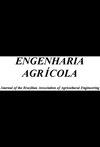用于大豆生产系统研究的作物模型的校正
IF 0.9
4区 农林科学
Q3 AGRICULTURAL ENGINEERING
引用次数: 0
摘要
本文章由计算机程序翻译,如有差异,请以英文原文为准。
CALIBRATION OF THE CROPWAT MODEL FOR THE STUDY OF SOYBEAN PRODUCTION SYSTEMS
CROPWAT is a model that uses water balance to study the water factor and productivity in production systems. In this sense, this study aimed to calibrate the CROPWAT for modeling rainfed and irrigated soybean production systems. Climate and soil data from a soybean-producing region in the south of Mato Grosso do Sul, Brazil, were used to implementing simulations in nine agricultural years, and crop shortfalls were calculated and compared with reference data. Statistical indices were applied to evaluate the performance of the model in its calibration. For validation, two field trials with 12 cultivars were implemented under irrigation and rainfed and the mean productivity in each water management was compared with the CROPWAT estimate by Student’s t-test. Accuracy (r) was 0.976 (“very strong”), precision (r 2 )
求助全文
通过发布文献求助,成功后即可免费获取论文全文。
去求助
来源期刊

Engenharia Agricola
AGRICULTURAL ENGINEERING-
CiteScore
1.90
自引率
20.00%
发文量
62
审稿时长
4-8 weeks
期刊介绍:
A revista Engenharia Agrícola existe desde 1972 como o principal veículo editorial de caráter técnico-científico da SBEA - Associação Brasileira de Engenharia Agrícola.
Publicar artigos científicos, artigos técnicos e revisões bibliográficas inéditos, fomentando a divulgação do conhecimento prático e científico na área de Engenharia Agrícola.
 求助内容:
求助内容: 应助结果提醒方式:
应助结果提醒方式:


